
|
North American |
 |
||||||||
|---|---|---|---|---|---|---|---|---|---|---|
 |
 |
 |
 |
 |
 |
 |
 |
 |
 |
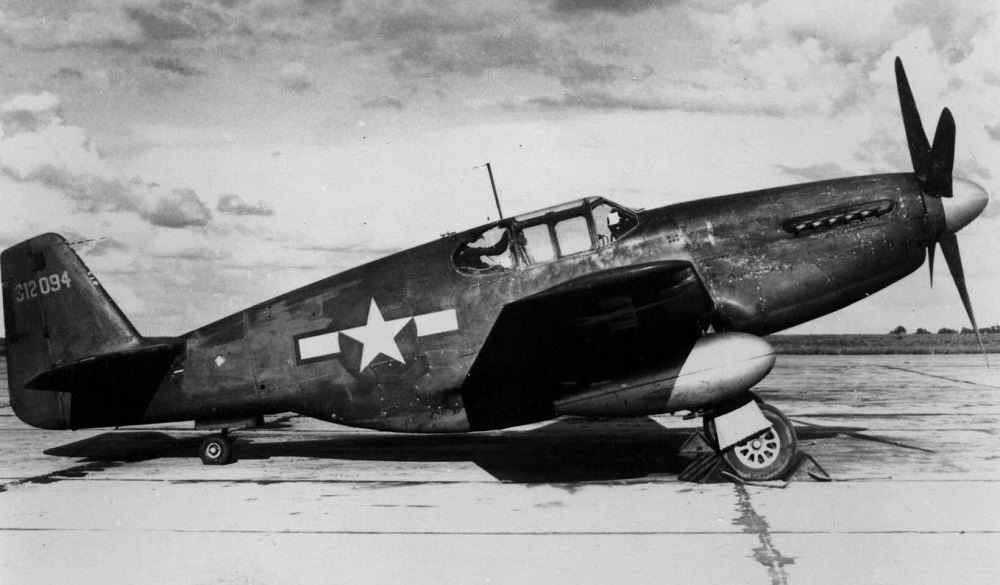
|
|
Among one of the most famous fighters of World War II, the P-51 Mustang has its roots in both Britain and the USA. Originally overlooked by the USAAF, the P-51 did not see action with American forces until March 1943. Once its full potential had been developed, the USA realized that this aircraft had been ignored for far too long a time. With the forging of the American airframe with the British Rolls-Royce Merlin engine, it would be unmatched by any other piston aircraft of World War II.
If you can see the video controls but the video doesn't play click the link below. In late 1939, with the likelihood of full-scale war in Europe a major concern, the British Royal Air Force was looking seriously at methods of quickly increasing its fighter strength. In April 1940, the British Air Purchasing Commission approached North American Aviation with the intent of having them build Curtiss P-40's for the RAF. Since the P-40 design went back to 1933, James H. "Dutch" Kendelberger, the president of North American offered to build an entirely new advanced fighter using the same Allison V-1710-39 engine used on the P-40. It was said that "Dutch" got his inspiration for the P-51 after a 1938 tour of aircraft industries in Great Britain and Germany.1 North American's only previous fighter experience was with the NA-50A, but Dutch collaborated with J.L. "Lee" Atwood2 to formulate an outline for the project. The British agreed on the new type, NA-73X, only on the stipulation that a prototype be on hand within 120 days. North American designers Raymond Rice and Edgar Schmued, the latter had worked for Fokker and Messerschmitt in 1925,3 immediately set about meeting the requirements. A prototype was finished in 117 days minus the engine, plus wheels which had to be borrowed from an AT-6 trainer. Six weeks later after several modifications, the aircraft took to the air on 26 October 1940, piloted by Vance Breese at the controls who was one of the most famous test pilots in his day.4 The XP-51 reached 382 mph, exceeding the P-40's top speed by 25 mph.5 The P-51 was an immediate success and it even outperformed the Spitfire.6 |
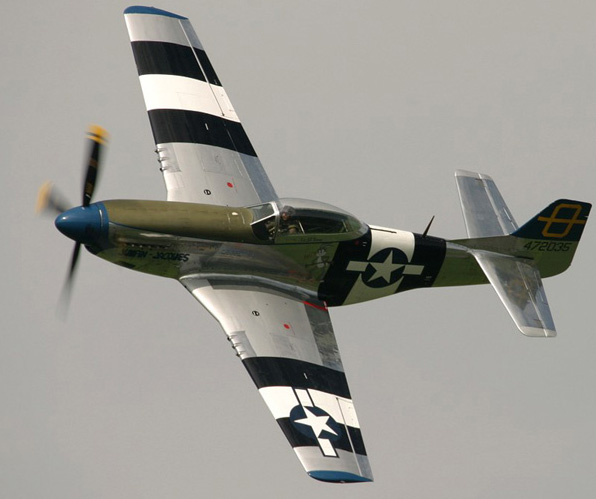
Unique to the P-51 was the laminar flow wing design which was developed by the US National Advisory Committee for Aeronautics (NACA). Contemporary aircraft wings featured a wing cross-section with maximum thickness about a fifth of the way across the wing from the leading edge with most of the camber on top of the wing. The laminar flow wing in contrast has its maximum thickness well aft from the leading edge and has almost as much camber on top as on the bottom. This feature reduced turbulent flow across the wing, thereby reducing drag and increasing speed and range. Drag was also reduced by positioning a ventral radiator underneath the rear of the fuselage to present the smallest possible fuselage cross section. The British Purchasing Commission was enthusiastic about the plane and confirmed a production order for 320 Mustang Is. This was later increased by 300 for NA-83s which differed only in minor details; the British designation was Mustang IA.7 Powered by the 1,100 hp Allison V-1710-39 engine, the airplane's performance was only impressive up to 15,000 ft. However, performance would be dramatically improved once the airframe was matched with the Rolls-Royce Merlin engine. This is not to say that the Allison wasn't a good engine as it performed very well on the Lockheed P-38. The problem with the Allison had more to do with the USAAF's heavy reliance on turbosupercharging. This requirement was impossible to meet for all aircraft due to a shortage of metal alloys such as tungsten. There was some experimentation with turbosupercharged P-40s by designer Donaldson R. Berlin and these planes outperformed the Spitfire and Messerschmitt Bf 109.8
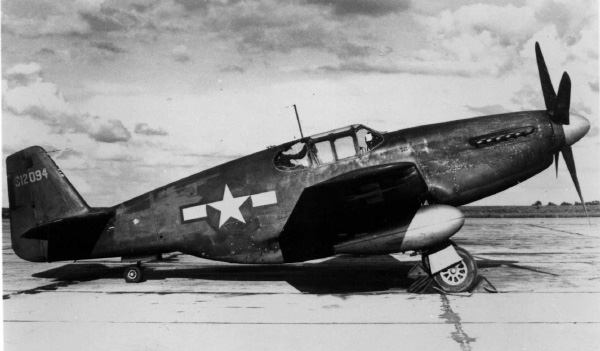
When the Rolls-Royce Merlin engine installed in the P-51B, During the design stage, on 4 May 1940, the US Army released the design for export with the condition that two of the planes be delivered to them for evaluation. At this time, the NA-73 was assigned the XP-51 designation. The fourth and tenth airframes were sent to the Army for testing and were given the serial numbers 41-038 and 41-039. An order for 150 P-51s followed which was to satisfy the RAF request as part of the Lend Lease legislation. After Pearl Harbor, fifty-three of these were kept back as reconnaissance aircraft. Initially, the P-51 was named "Apache" for a short time, but the name "Mustang" was later adopted. The British designation would be Mustang I. Most of the first 20 Mustangs to arrive in England were used for test and evaluation. It wasn't until 1942 that the USAAF decided to order 310 P-51As and 300 ground attack/bomber A-36A Mustangs. The reason for the delay in procurement of the type was for somewhat murky reasons, uncovered during an inquiry known as the Truman Report.9 The demand for kick-backs was refused by Dutch Kindelberger in order to get a production award. "Ultimately, even those who sought to block the procurement could not sustain their position, because of the obvious qualities of the airplane."10 The P-51A was powerd by an Allison V-1710-81 engine which developed 1,200 hp for takeoff and increased maximum speed to 390 mph. The British designation for the P-51A was the Mustang II and fifty were delivered late in 1942.
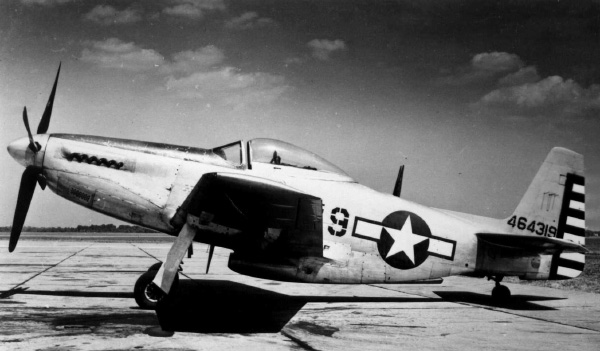
North American P-51H-5 Mustang With the limitations for fighter duties due to the Allison engine, nevertheless the Mustang had good ground attack potential and its high speed at low altitude made it ideal for tactical reconnaissance. To enhance altitude capabilities, a mockup was devised in England to use the Rolls-Royce Merlin engine in the P-51 airframe. One concept was to locate the new engine behind the cockpit, but this idea was rejected and the Merlin was mounted in the conventional position in the nose. Four airframes were adapted in England to take the Merlin engine. These four planes known as Mustang Xs had deep intakes below the engine for carburetor air. The results of the British tests were passed on to North American. In the meantime, North American had undertaken a similar conversion project and was building two Packard Merlin-powered Mustangs. The level airspeed increased by 51 mph, to 441 mph. The airframes were strengthened to accommodate the extra power, the ventral radiator was deepened and the carburetor intake was moved from above the nose to below, to accommodate the Merlin updraft induction system.11 Even before the Army's Merlin powered Mustangs had flown, the US Army ordered 2,200 of the more powerful fighters. For a short time, this model was designated XP-78, then redesignated as XP-51B. 25 P-51Bs and 275 P-51Cs were given the British designation Mustang III. The California Mustangs were known as the P-51B-NA and the Dallas, Texas facility produced the P-51C-NT.12 The Merlin powered P-5lB and its Dallas-built twin, the P-51C, began operations in December 1943. A further improvement to the Mustang was introduced when a graceful teardrop canopy (this canopy was already appearing on the Hawker Typhoon)13 was installed to eliminate the dangerous blind area created by the faired cockpit. First tested on two P-51Bs, they became standard on the P-51D and all later models. 280 P-51Ds were given the RAF designation Mustang IV. The P-51D became the version produced in the greatest quantities with 7,954 being completed. The P-51D model carried six .50 caliber machine guns with a total of 1,880 rounds instead of the four guns mounted in the P-51Bs. Other refinements, such as moving the wing forward slightly and provisions for rocket launchers were included. The first P-51Ds types were delivered without dorsal fins, but this feature was added to compensate for keel-loss when the bubble canopy was adopted.
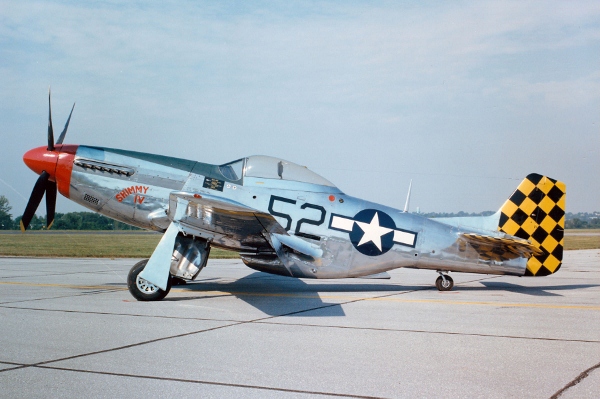
North American P-51D Mustang with dorsal fin. The P-51D with the dorsal fin represented the most typical Mustang configuration. The wingspan was 37 feet with an area of 233 square feet and was 32 feet 3 inches long. Height was 13 feet 8 inches. The Packard-built Merlin V-1650-7 was capable of delivering 1,695 hp which provided a speed of 437 mph at 25,000 feet. Weights were 7,125 lbs. empty and 10,100 lbs. normal gross, but an additional 2,000 lbs. could be carried. Internal fuel capacity was 105 gallons, giving a range of 950 miles at 362 miles per hour at 25,000 feet and up to 1,650 miles with external tanks. The P-51H series was the final production type that included several changes making it the fastest production variant with a maximum speed of 487 mph at 25,000 feet. Five hundred fifty-five P-51H's were delivered before VJ Day out of an original order for 1,445 machines.14
The P-51 Mustang was a game changer in the air war in Europe after they were used operationally by the 8th Air Force and RAF. Daylight bomber raids had been discontinued by the RAF and Luftwaffe as being too costly in bomber losses, but the USAAF continued daylight raids as they assumed that B-17s could defend themselves with their formidable fire power with their thirteen .50 caliber machine-guns bristling from gun ports. However, with losses increasing, it was determined that fighter escort was still required. Before the P-51 arrived, fighter escorts were unable to escort bombers all the way to the target due to the limited range of the Republic P-47, Lockheed P-38 and Spitfire fighters. Luftwaffe fighters would often wait to attack the bomber formations until after allied escorts turned back at the end of their combat range. With the use of drop-tanks to increase range, P-51s were able to operate into the deepest targets of the Third Reich. For the first time USAAF daylight bombing raids could be escorted by allied fighters all the way to Berlin and back. The first RAF mission across the Channel was by No 26 Squadron with the first air battle on 19 August 1942 by Allison powered Mustangs. Allison powered Mustangs were the first single-seat fighters to penetrate German airspace from England. Fifteen squadrons served with the RAF in January 1943 with five remaining in June 1944. Two squadrons served at low-altitude roles until the end of the war. Their first long-range escort mission was on 13 December 1943 against U-boat pens in the port of Kiel for VIII Fighter Command, a combat radius of 490 miles, a record escort mission to that date. In March 1944, P-51s accompanied bombers all the way to Berlin, 560 miles from its bases, and back. By mid-1944 P-51s could reach as far as Polish and Silesian targets. By the end of the war in Europe, the P-51 had a longer combat radius than the Boeing B-17. The vast majority of P-51s were engaged in northern Europe due to the Europe First Agreement of the Allied leaders. Roosevelt, Churchill and Stalin decided that it was necessary to win the war in Europe before they could concentrate their efforts on Japan, but based in Iwo Jima, P-51s escorted long-range Boeing B-29s on their devastating raids on the Japanese home islands. P-51s also served in Burma with the 10th Air Force and the 15th Air Force in Italy. Under Lend-Lease, 50 P-51s were supplied to China, 40 to the Netherlands in the Pacific theater, and some USAAF P-51s were supplied to the American Volunteer Group (AVG) in China. P-51s could engage anything the Germans and Japanese could put into the air and win most of these battles. In the postwar years, P-51s served with the Strategic Air Command (SAC) until 1949 and several more years with the US Air Reserves and National Guard units, being some of the first USAF aircraft to see action in the Korean War. Some P-51s remained in service with Fighter Command until 1946. Surplus P-51s from both the USA and the UK were to see service in 50 different air forces.15
To say the North Ameican P-51 Mustang was a success would be an understatement. It is considered to be the best piston aircraft of World War II and became one of the world's aviation elite. More than 15,000 Mustangs of all types were built. American Mustangs destroyed 4,950 enemy aircraft making them the highest scoring US fighter in the Europe Theater of Operations. They were used as dive-bombers, bomber escorts, ground-attackers, interceptors, for photo-recon missions, trainers, transports (with a jump-seat), and after the war, high performance racers. |
| Specifications: | |||
|---|---|---|---|
| North American P-51 Mustang | |||
| Dimensions: | |||
| P-51A | P-51B | P-51D | |
| Wing span: | 37 ft (11.27 m) | 37 ft (11.27 m) | 37 ft (11.27 m) |
| Length: | 32 ft 3 in (9.82 m) | 32 ft 3 in (9.82 m) | 32 ft 3 in (9.82 m) |
| Height: | 12 ft 2 in (3.70 m) | 13 ft 8 in (4.16 m) | 13 ft 8 in (4.16 m) |
| Weights: | |||
| Empty: | 6,433 lb. (2,918 kg) | 6,985 lb. (3,168 kg) | 7,125 lb. (3,232 kg) |
| Gross: | 8,600 lb (3,901 kg) | 9,800 lb (4,445 kg) | 10,100 lb (4,581 kg) |
| Max T/O: | 9,000 lb (4,082 kg) | 11,800 lb (5,352 kg) | 11,600 lb (5,262 kg) |
| Performance: | |||
| Max Speed: | 390 mph (628 km/h) | 440 mph (708 km/h) | 437 mph (703 km/h) |
| Ceiling: | 31,350 ft. (9,555 m) | 42,000 ft. (12,802 m) | 41,900 ft. (12,771 m) |
| Range: | 350 miles (563 km) | 1,300 miles (2,092 km) | 950 miles (1,529 km) |
| Max Range: | 2,550 miles (4,104 km) | 2,080 miles (3,347 km) | 2,300 miles (3,701 km) |
| Powerplant: | ||
|---|---|---|
| P-51A | P-51B | P-51D |
|
Allison V-1710-81 1,200 hp, 12 cylinder V engine. |
Packard Merlin V-1650-3/7 1,380/1,420 hp, two-staged supercharged, 12 cyl. V engine. |
Packard Merlin V-1650-7 1,695 hp, two-staged supercharged, 12 cyl. V engine. |
| Armament: | ||
| Four .50 caliber machine guns, external bomb load of 1,000 lbs. (453 kg.) | Four .50 caliber machine guns, external bomb load of 2,000 lbs. (907 kg.) or drop tanks. | Six .50 caliber machine guns, external bomb load of 2,000 lbs. (907 kg.) or four .5 inch rockets. |
| Endnotes: |
|---|
|
1. Edward Shacklady. Aircraft In Profile. The North American P-51 Mustang. Surrey, England; Profile Publications Ltd., 1965. 1. 2. Enzo Angelucci and Peter M Bowers. The American Fighter. Mila, Italy; Haynes Publishing Group., 1987. 330. 3. William Green. Famous Fighters of the Second World War. Garden City, New York; Doubleday & Company., 1975. 203. 4. Ibid. 204. 5. Enzo Angelucci and Peter M Bowers. 330. 6. William Green. 202. 7. Enzo Angelucci and Peter M Bowers. 331. 8. Herschel Smith. The History of Aircraft Piston Engines. Manhattan, Kansas; Sunflower University Press, 1986. 87. 9. Enzo Angelucci and Peter M Bowers. 331. 10. Richard Atkins. Aircraft In Profile. The North American P-51b & C Mustang. Surrey, England; Profile Publications Ltd., 1969. 4. 11. William Green. 208. 12. Richard Atkins. 5. 13. Edward Shacklady. 3. 14. William Green. 212. 15. David Mondey. The Concise Guide to American Aircraft of World War II. New York: Smithmark Publishers, 1996. 204. |
© Larry Dwyer. The Aviation History Online Museum.
All rights reserved.
Created November 29, 2001. Updated January 30, 2023.